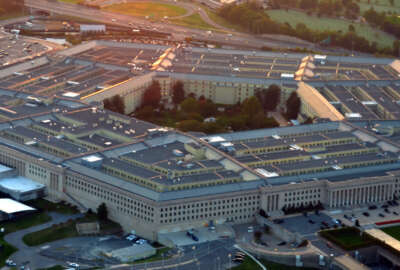
DoD experts advocate dumping civilian unions
DoD analysts and former officials are recommending direct hiring and pay authority over civilian Pentagon workers.
Experts are breathing new life into an idea that would effectively abolish Defense Department civilian workers’ ability to unionize, but also give the Pentagon more hiring flexibility.
A new study from the Bipartisan Policy Center and former DoD officials testifying before Congress suggest moving DoD civil servants from the jurisdiction of the Office of Personnel Management and directly under the authority of DoD.
The change would “allow the defense secretary to customize a system to control hiring, management, compensation and retention policies for the defense-civilian workforce,” the Bipartisan Policy Center study stated. “The Defense Department needs a comprehensive set of hiring and personnel-management authorities that enable it to acquire, develop and retain its workforce.”
The study calls the current personnel system outdated, rigid and designed for a different type of workforce. It limits advancement opportunities and most merit-based pay raises. It also lacks flexibility in hiring and firing, an authority experts say is needed in the fast paced cyber realm.
Former personnel officials from the Obama and George W. Bush administrations testified before the Senate Armed Services Personnel Subcommittee on March 24 that changing the authorities under which DoD civilians operate would save the department money and better its operations.
Peter Levine, who performed the duties of the defense undersecretary for personnel and readiness under the Obama administration, said lack of direct hiring authority hurts DoD’s ability to recruit the best and brightest.
“We need to be able to go to [universities] and say ‘You’re talented, we want you, we’ll find a place for you … we are going to tell you yes now and we’re going to figure out a way to make it work.’ Direct hiring enables us to do that,” Levine said.
Levine said the current structure of USAJobs will never enable DoD to have that power.
The former officials told Congress it takes about three months to hire someone through the USA Jobs process.
“Right now, if a DoD recruiter meets an undergrad student, a grad student, or a recent graduate who’s a perfect candidate for a particular job opening, they have to send them to the website,” former Defense Secretary Ash Carter said last year. “It can take 90 days — and that’s if everything’s moving at lightspeed. And that’s not even counting the time it takes for a security clearance. Some people are able and willing to wait that long, and we’re lucky for that. But in today’s job market, if you’re a computer science or other STEM major graduating from Stanford or MIT or the University of Texas, you’re not going to wait three more months after you applied for us to make you an offer.”
Giving DoD direct control over hiring and pay makes it harder for employees to bargain collectively.
Current law allows the president to exempt certain groups from OPM control. “In theory the Trump administration could exempt civil servants in the Department of Defense from unionizing. That would free up a lot of the kinds of recommendations that you’ve heard from my colleagues,” said Dov Zakheim, former DoD comptroller.
But civilian worker unions say that is a dangerous path to tread.
“Calls to make it easier to fire a federal employee by decreasing due process rights or speeding up the removal process are ‘dog whistles’ for making the career service subject to the partisan or personal whims of a few supervisors or political appointees,” American Federation of Government Employees President J. David Cox Sr. said in a March 23 statement. “Due process rights, including union rights, for civil servants at DoD or other agencies provides accountability to the public for both managers and political appointees and is a cornerstone of our system of democracy and should not be treated as expendable.”
DoD tried on numerous occasions to gain direct hiring authority. Most recently it tested the waters as part of the Force of the Future initiative during Carter’s tenure.
A draft memo floated around in 2015 that would have moved non-bargaining civilians under DoD’s direct authority, a total of about 15 to 20 percent of the DoD workforce.
That memo was eventually scrapped after an outcry from unions.
“What we discovered is we end up fighting years of political battles and trying to replicate a lot of the protections Title 5 already includes so that we can assure people that we intend to treat them fairly. If you simply say ‘there are no rules,’ you don’t have that assurance. I think the direct hire authority is a great example of where we can work within the current system,” one defense official said under the condition of anonymity last year.
Copyright © 2025 Federal News Network. All rights reserved. This website is not intended for users located within the European Economic Area.
Scott Maucione is a defense reporter for Federal News Network and reports on human capital, workforce and the Defense Department at-large.
Follow @smaucioneWFED





